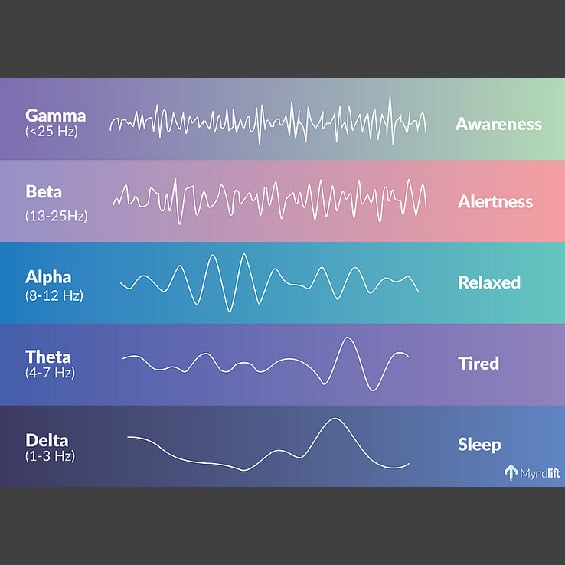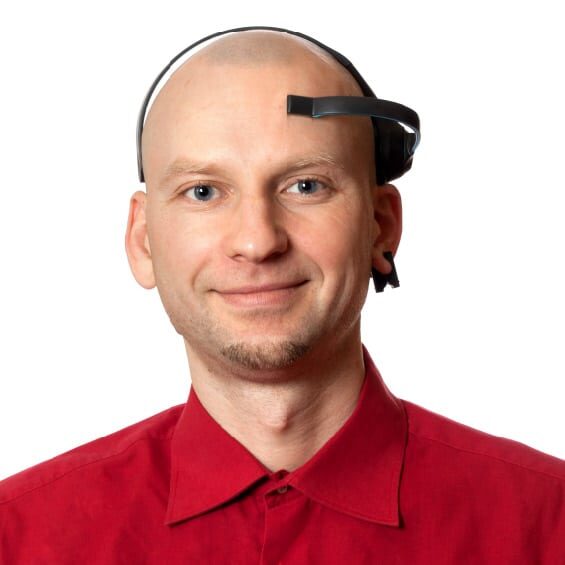
Neurofeedback Therapy
in Houston, TX and Online
What is Neurofeedback Therapy?
Neurofeedback therapy, also known as EEG-neurofeedback or simply neurofeedback, is a non-invasive method of measuring your brainwave activity and training your brain. Neurofeedback is a form of biofeedback based on a learning method called operant conditioning. Through operant conditioning, an association is made between a behavior and a consequence (whether negative or positive). The goal of neurofeedback is to train the brain to regulate itself and help you understand when your brain is in the desired state. Eventually, your brain may be able to maintain a more balanced state even when it’s not receiving feedback.Source: myndlift.com/post/what-is-neurofeedback-therapy

How Does Neurofeedback Work?
Neurofeedback can be broken down into five sections:
- The headset, sensor, and EEG measures brain activity.
- The brain activity is separated into 5 brainwaves, to better understand your mental state.
- Your neurotherapist creates a personalized plan after assessing and evaluating the information gathered from #1 and #2. Remember, neurofeedback therapy is not a “one size fits all” approach given the individual differences in brain activity.
- By playing video games and watching movies, you can mentally train your brain.
- Practice makes perfect. Train consistently to help you retrain your brain.


What Can Brainwaves Tell Us?
Brainwaves are related to thoughts, emotions, and behaviors.
The 5 Types of Brainwaves are:
- Gamma
- Beta
- Alpha
- Theta
- Delta
Let’s compare the five brainwaves to musical notes: low-frequency brainwaves are like a deep drum beat, and the higher ones are like a subtle, high-pitched violin. As a symphony, the higher and lower frequencies link and cohere with each other.
Now depending on what you are doing at any given time, a particular brainwave may be dominant over others. And, if your brainwaves are not balanced properly [irregular brainwaves], you may experience both emotional and neurobehavioral health concerns.
Neurofeedback teaches your brain to regulate your brainwaves so that you can achieve a balanced brainwave state.
Neurofeedback practitioner Zara Dureno explains neuro therapy like this:
“You put a device on your head that picks up on your brainwaves and delivers feedback to you in real time on your smartphone or tablet, via a game, whether you’re in an optimal brainwave state or not. And you get points the more you’re in an optimal state, so it’s kind of like giving a dog a cookie every time it does something good; you’re training your brain to be in that state more often.”
Source: myndlift.com


How Does My Brain Stay in That Optimal State?
Neurofeedback expert Dr. Nathan Brown explains it like this:
When a client asks me “How does my brain stay in that optimal state?” I start by explaining the principle behind homeostasis:
“When explaining homeostasis, I use the word balance. I elaborate on the idea that the brain operates the entire body, and it wants balance. Neurofeedback is simply a way of alluring the brain into that balance. Once the brain gets there, it wants more. We call that unconditioned stimulus.”
Why Should I Balance My Brainwaves?
Say you want to achieve improved attention.
When you’re training for attention, sensors on your head will help detect alertness in real time. So, each time you’re in a mental state reflecting focus, you may get a visual or auditory reward.
And this reward encourages your brain to remain/enter this state more often.
Source: myndlift.com
Neurofeedback Therapy to Reduce Symptoms, Restore Brain Function, and Improve Brain Efficiency
- ADHD:
- Anxiety: Repairing the Dysregulated Stress Response System
- Depression: Rebalancing the Brain
- PTSD: Regaining Control
- Brain Injury Rehabilitation: Strengthen and help generate new neural pathways to restore brain function
- Peak Performance: Improve brain efficiency, Train neural networks, Promote stress recovery, and Improve sleep quality
Source: myndlift.com/post/what-is-neurofeedback-therapy


Neurofeedback Therapy FAQ's
Absolutely.
"What we are doing with neurofeedback is sort of like if your brain were a guitar.
You could have the world's best guitar but, if it's out of tune, it doesn't play well.
We can tune the guitar – that's what neurofeedback is.
And then you have to practice in order to learn how to play.
This takes time," explains neurofeedback expert Dr. Nathan Brown.
Dr. Brown also points out that “tuning the guitar” and “learning how to play” requires at least 12 weeks.
Sometimes, people will continue using neurofeedback after the required amount of sessions have been completed for different reasons.
For example, suppose they initially used it to alleviate anxiety symptoms and achieved that goal.
In that case, they may switch their focus to improving their performance to become better at decision-making at work.
Neurofeedback can help reduce the symptoms of:
- ADHD
- Anxiety
- Depression
- PTSD
- Traumatic Brain Injury
Neurofeedback therapy does not hurt.
Neurofeedback therapy is a non-invasive method of monitoring brain activity.
You wear a headset with a sensor on your head.
Why Do I Need a Neurofeedback Therapist?
Remember that neurofeedback is a form of biofeedback and biofeedback therapies rely on the fact that a person who can access information about their body’s functions in real time could also learn to control them.
Dr. Brown offers the following analogy to better understand neurofeedback and highlights the importance of a neurofeedback therapist.
“If you make a fist right now, you’ll know that you made it because you have visual and tactile feedback [you can see the tips of your fingers clenching tightly into your palm].
And because you have that sort of power from the feedback loop, you could become a pianist if you wanted to. You have incredible control over your hands!
Now, if I would ask you to slow down your heart rate, what would you do? Probably a deep breathing exercise. But how would you know that you’ve slowed down your heart rate? You don’t have a feedback loop.
On the other hand, if I gave you a stethoscope, you would have a feedback loop, and you would probably be able to lower your heart rate five beats a minute inside of five minutes.”
So essentially, you need a neurofeedback therapist to analyze the information gathered in your feedback loop in real-time and explain your mental states.
By getting insight into your brain activity with neurofeedback, you’ll have the knowledge necessary to have more control over your goals.
Source: myndlift.com
Get Help From a Specialist in Neurofeedback Therapy
What Clients Are Saying












